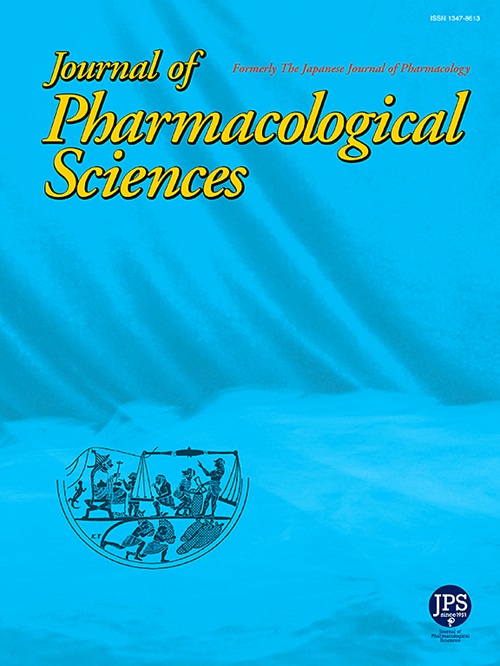SMTP-44D prevents negative symptoms of diabetic neuropathy by inhibiting sciatic nerve apoptosis
IF 2.9
3区 医学
Q2 PHARMACOLOGY & PHARMACY
引用次数: 0
Abstract
Diabetic neuropathy (DN) affects more than 50 % of patients with diabetes mellitus (DM). With progression, it causes negative symptoms characterized by sensory numbness. However, no effective treatment drug has been approved for the negative symptoms of DN. In this study, Stachybotrys microspora triprenyl phenol-44D (SMTP-44D), previously reported to inhibit apoptosis and ameliorate axonal damage in immortalized mouse Schwann cells treated with high glucose, was evaluated in a DN mouse model. Streptozocin (STZ)-induced DM models were treated with SMTP-44D for 49 days starting 8 days after STZ administration of SMTP-44D, and effects on mechanical and thermal thresholds, blood flow, and conduction velocity were evaluated. Epoxyeicosatrienoic acid (EET)/dihydroxyeicosatrienoic acid (DHET) measurements in serum, morphological changes in the sciatic nerve, immunohistochemistry, and TUNEL staining were performed to elucidate the mechanism of action. SMTP-44D improved the 11,12-EET/DHET decrease in serum and blood flow in the sciatic nerve. It inhibited sciatic nerve apoptosis and alleviated myelin thinning, thereby preserving the conduction velocity and showing dose-dependent improvements in mechanical and thermal threshold elevation. A hypoglycemic effect with long-term administration is suggested based on the findings. In conclusion, SMTP-44D is a promising therapeutic agent against the negative symptoms of DN.
SMTP-44D通过抑制坐骨神经凋亡来预防糖尿病神经病变的阴性症状
糖尿病性神经病变(DN)影响50%以上的糖尿病(DM)患者。随着病情发展,会出现以感觉麻木为特征的阴性症状。然而,目前还没有一种有效的药物被批准用于治疗DN的阴性症状。在本研究中,研究人员在DN小鼠模型中对Stachybotrys microspora triprenyl pheno - 44d (SMTP-44D)进行了研究,该研究先前报道了SMTP-44D在高糖处理的永生化小鼠雪万细胞中抑制凋亡并改善轴突损伤。从STZ给予SMTP-44D后8天开始,用SMTP-44D治疗STZ诱导的DM模型49天,观察其对机械阈值、热阈值、血流量和传导速度的影响。采用血清环氧二碳三烯酸(EET)/二羟基二碳三烯酸(DHET)测定、坐骨神经形态学变化、免疫组化、TUNEL染色等方法探讨其作用机制。SMTP-44D改善了血清和坐骨神经血流中11,12- eet /DHET的下降。它抑制坐骨神经凋亡,减轻髓鞘变薄,从而保持传导速度,并在机械和热阈值升高方面表现出剂量依赖性改善。根据研究结果,建议长期服用具有降糖作用。综上所述,SMTP-44D是一种很有前景的治疗DN阴性症状的药物。
本文章由计算机程序翻译,如有差异,请以英文原文为准。
求助全文
约1分钟内获得全文
求助全文
来源期刊
CiteScore
6.20
自引率
2.90%
发文量
104
审稿时长
31 days
期刊介绍:
Journal of Pharmacological Sciences (JPS) is an international open access journal intended for the advancement of pharmacological sciences in the world. The Journal welcomes submissions in all fields of experimental and clinical pharmacology, including neuroscience, and biochemical, cellular, and molecular pharmacology for publication as Reviews, Full Papers or Short Communications. Short Communications are short research article intended to provide novel and exciting pharmacological findings. Manuscripts concerning descriptive case reports, pharmacokinetic and pharmacodynamic studies without pharmacological mechanism and dose-response determinations are not acceptable and will be rejected without peer review. The ethnopharmacological studies are also out of the scope of this journal. Furthermore, JPS does not publish work on the actions of biological extracts unknown chemical composition.

 求助内容:
求助内容: 应助结果提醒方式:
应助结果提醒方式:


